.png)
The Integration of BIM and IoT for Smart Homes
Introduction: Revolutionizing Smart Homes with BIM and IoT
In recent years, smart homes have become a growing trend, transforming how we live. These homes use advanced technology to automate and control various systems, from lighting to security. But now, with the integration of Building Information Modeling (BIM) and the Internet of Things (IoT), smart homes are reaching new levels of intelligence and efficiency.
BIM is a digital representation of a building’s physical and functional features, widely used in modern construction. IoT connects devices within the home, allowing them to communicate and gather real-time data. Together, BIM and IoT create a powerful combination for managing home automation, energy use, and comfort. This integration allows smart homes to adapt to their occupants' needs while optimizing energy and resources.
As we dive into this topic, we’ll explore how BIM and IoT work together to reshape smart homes, making them more efficient, comfortable, and sustainable.
Understanding BIM and IoT: The Foundation of Smart Home Integration
BIM and IoT serve as foundational technologies for modern smart homes, each playing a unique role in creating efficient, responsive living environments. Building Information Modeling (BIM) is a digital model that represents the physical and functional aspects of a building. In construction, BIM allows architects, engineers, and contractors to manage every stage of a building's lifecycle—from design and construction to maintenance. This model centralizes project information, ensuring precise planning, construction, and long-term building management.
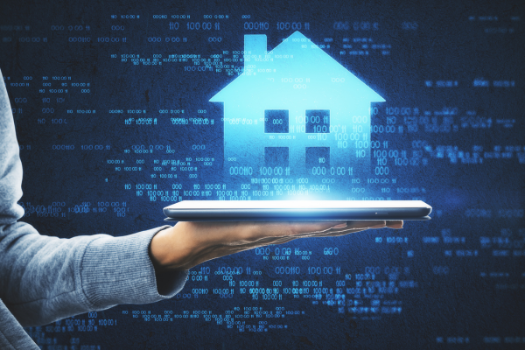
On the other hand, the Internet of Things (IoT) is a network of connected devices within a home. These devices collect, share, and analyze data to optimize home operations. For example, sensors can monitor temperature, lighting, and occupancy in real time, adjusting settings based on user preferences or environmental conditions.
When BIM and IoT work together, they enable smarter decision-making. The data from IoT devices feeds directly into the BIM model, creating a living digital twin of the home. This real-time information allows homeowners to make proactive adjustments and perform preventive maintenance. The result is a smarter home that runs efficiently, meets the occupants' needs, and reduces energy use.
Key Benefits of BIM and IoT Integration in Smart Homes
Integrating BIM and IoT in smart homes offers tangible benefits that go beyond high-tech luxury. For homeowners, construction professionals, and facility managers, this combination creates a home environment that is efficient, comfortable, and sustainable.
One of the most significant advantages is energy efficiency. IoT sensors in smart homes gather data on occupancy, temperature, and lighting needs, allowing the home to adjust heating, cooling, and lighting automatically. This reduces energy waste and lowers monthly costs. When connected with a BIM model, this data-driven approach becomes even more effective, providing a holistic view of a home's energy use and identifying potential savings.

Enhanced comfort and safety are other major benefits. IoT sensors communicate with the BIM model, making it easy to control lighting, temperature, and even security systems remotely. This means homeowners can enjoy a perfectly comfortable environment at any time, and can monitor their home’s security from anywhere, enhancing both convenience and peace of mind.
Preventive maintenance is also streamlined. IoT sensors monitor the condition of home appliances and building systems, providing alerts when repairs or maintenance are needed. BIM then takes this data and records it, helping to track and manage maintenance schedules over time. This proactive approach prevents minor issues from turning into costly repairs, extending the lifespan of appliances and systems.
Lastly, resource optimization is a key benefit. BIM and IoT together allow homes to monitor and manage resources like water and electricity in real time. This ensures that resources are only used when needed, which is not only eco-friendly but also cost-effective. By optimizing every aspect of home operation, BIM and IoT integration make smart homes genuinely smarter, setting a new standard in sustainable living.
How BIM and IoT Work Together in Smart Home Construction
BIM and IoT work together at every stage of smart home construction, enhancing precision and efficiency from design through to management. In the design phase, BIM allows architects to create digital models that incorporate IoT devices, strategically placing sensors to support seamless home automation. This ensures the technology is built into the home’s foundation.
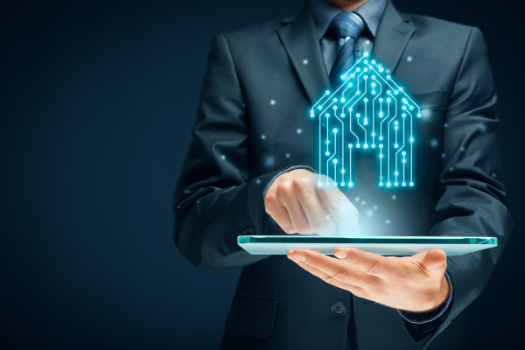
During construction, IoT sensors monitor real-time conditions like temperature and humidity, feeding data back into the BIM model. This supports quality control and enables construction managers to make informed, on-site decisions, improving efficiency and ensuring the home meets high standards.
In the post-construction phase, BIM and IoT continue to operate as a digital twin—a live model of the home that reflects real-time conditions. IoT devices provide continuous data on aspects like energy use and appliance health, simplifying management for homeowners. This ongoing integration enables proactive adjustments and extends the home’s longevity and efficiency, making daily life smoother and more sustainable.
The Role of Data: Driving Informed Decision-Making in Smart Homes
BIM and IoT provide the critical data foundation needed to manage smart homes effectively. BIM organizes and visualizes data throughout the entire lifecycle of a home, from design to long-term maintenance. It serves as a central model where all information is stored and accessed, making it easy to manage complex home systems.
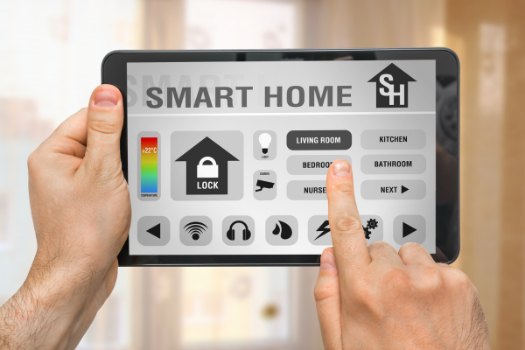
IoT complements this by collecting real-time data on everything from temperature and lighting to occupancy patterns. This data gives insight into how the home is used day-to-day, allowing for immediate adjustments to improve comfort and efficiency. Data analytics then step in to interpret this information, helping to predict needs and automate smart home systems. Together, BIM and IoT enable informed, data-driven decisions that make homes more adaptable, resilient, and sustainable.
Real-Life Applications of BIM and IoT in Smart Homes
BIM and IoT integration brings practical improvements to everyday life in smart homes. For example, smart HVAC systems use sensors to monitor room occupancy and temperature. Linked to a BIM model, these systems can adjust heating or cooling based on actual needs, reducing energy waste and keeping the home comfortable.
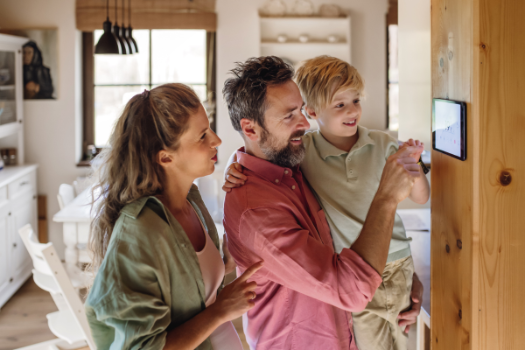
Automated lighting and window control is another application where IoT sensors work with BIM to manage light levels. These sensors detect sunlight and adjust artificial lighting or shades accordingly, ensuring optimal brightness throughout the day without manual adjustments.
Security is also enhanced through BIM and IoT. Smart locks, cameras, and alarms are integrated within the BIM model, allowing homeowners to monitor their property and control access remotely. This gives homeowners peace of mind and simplifies the management of complex security systems. Through these examples, it’s clear how BIM and IoT create a smoother, safer, and more efficient living environment.
Conclusion: A New Era of Smart, Sustainable Living
BIM and IoT are transforming smart homes into intelligent, sustainable living spaces. By integrating BIM’s data organization with IoT’s real-time monitoring, these technologies create homes that are energy-efficient, comfortable, and easy to manage. They are not just futuristic ideas; they are practical tools already enhancing daily life and setting new standards in home automation.
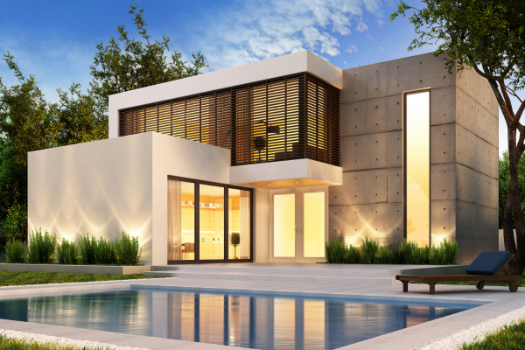
As BIM and IoT become more accessible and affordable, their benefits will reach more homeowners, making smart living a reality for many. Embracing these innovations means stepping into a future where homes adapt to our needs, use resources wisely, and contribute to a more sustainable way of living.